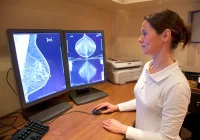Large language models (LLMs) are increasingly integrated into interventional radiology (IR), offering support for decision-making, documentation and communication. Their effectiveness, however, depends on the quality of the inputs they receive. Prompt engineering—the practice of carefully designing these inputs—is essential for generating outputs that are accurate, relevant and aligned with clinical needs.
As generative AI becomes more embedded in radiology workflows, prompt engineering emerges as a key skill for both practising clinicians and trainees. Despite its importance, the strategic use of prompts remains underutilised in IR, even as it gains traction across other areas of medicine. Exploring the principles, applications and challenges of prompt engineering reveals how it can enhance the safe and effective use of AI in interventional workflows.
Techniques and Applications in Prompt Engineering
Prompt engineering includes a range of methods for refining model inputs. At the basic level are zero-shot and few-shot prompts, which rely on no or minimal prior examples. These are useful for straightforward queries or when examples are not available. More advanced approaches, including chain-of-thought (CoT), tree-of-thought (ToT), self-consistency and directional stimulus prompting, introduce sequential reasoning, structured branching, multiple response comparison or contextual cues, respectively. Each technique influences how the model interprets tasks and structures responses.
For instance, CoT prompting guides the model through a logical step-by-step process, improving clarity in complex scenarios. ToT prompting encourages exploration of multiple reasoning paths, refining the final answer. Self-consistency uses multiple outputs to arrive at a consensus, increasing reliability. Directional stimulus prompting offers subtle hints or structured guidance to influence the style or content of a model’s response. These methods can be combined to create highly tailored prompts for different IR tasks.
Additional strategies further enhance model performance. Domain priming offers pre-contextualised input to inform the model of the specific clinical setting. Role priming goes a step further by instructing the model to act as a professional, such as an interventional radiologist. Emotional prompting can adjust tone to reflect the sensitivity of a given situation. All of these techniques aim to produce outputs that are appropriate for clinical or patient-facing applications.
In practice, these prompting strategies are applied across IR workflows. They support administrative planning, procedural decisions and post-operative care. Examples include scheduling procedures by urgency, evaluating patient suitability for interventions like TIPS, anticipating complications during ablations and determining follow-up protocols. By applying different prompting strategies to these tasks, clinicians can extract contextually relevant and safe information from LLMs.
Implementation Best Practices and Limitations
Effective prompt engineering requires careful attention to both structure and content. Prompts should be clear, concise and tailored to the desired output. Complex tasks may need to be broken into smaller prompts or framed with specific formatting instructions. Best practices include beginning with a simple prompt and refining iteratively, using directive language to reduce ambiguity, placing critical instructions early or late in the prompt for emphasis and aligning expected outputs with model capabilities.
Model limitations must also be considered. LLMs have constraints related to context window size, output length and knowledge cut-offs. These factors influence the model’s ability to generate accurate responses. Understanding which model is best suited to a task—whether a general-purpose or domain-specific version—is essential for reliable performance.
However, prompt engineering cannot change the internal workings of a model. It cannot correct for training data biases or eliminate hallucinations—outputs that appear plausible but are false. Prompt engineering only improves how existing model capabilities are used. As such, it is not a substitute for oversight or expert review. Moreover, improper prompts can yield incorrect or unsafe recommendations, especially if the model’s limitations are not adequately accounted for.
Must Read: Prompt Engineering in Healthcare: Driving Effective AI Integration
Data privacy and regulatory compliance also pose challenges. Many LLMs operate on platforms that may not meet healthcare-specific regulations such as HIPAA or PIPEDA. Prompting models with sensitive patient information on non-compliant platforms risks data exposure. There is a pressing need for privacy-preserving models adapted to clinical environments. Additionally, biases in training data can introduce systemic disparities into model outputs. Prompt engineering can help mitigate this, but comprehensive governance frameworks are needed to monitor usage and outcomes.
Regulatory Landscape and Future Prospects
Currently, LLMs are not approved for autonomous decision-making by the FDA or other regulatory bodies. They are intended as adjuncts, not replacements, for clinical expertise. Nonetheless, regulatory frameworks are evolving. In the U.S., the FDA is developing guidelines for AI tools under the software-as-a-medical-device category, including adaptive systems. In Europe, the AI Act introduces risk-based classifications, with healthcare categorised as high risk.
While prompt engineering is not yet explicitly addressed by regulators, this may change. Institutions may be required to log prompts and outputs, establish approved use cases and integrate models into validated software environments. Clinician training in prompt design and responsible use will be critical for compliance and safety.
Emerging AI techniques are likely to influence how prompt engineering evolves. Retrieval-augmented generation (RAG) allows models to access external sources during response generation, improving factual accuracy and contextual grounding. In radiology, RAG can reduce hallucinations and align outputs with established guidelines. Other advanced techniques, such as chain-of-verification, thread-of-thought and meta-prompting, offer further refinements in reasoning and reliability.
Looking ahead, as multimodal models become more common, prompt engineering will extend beyond text inputs. These models integrate images, audio and video, enabling new types of clinical support such as image interpretation, procedure guidance and AI-assisted reporting. Prompt engineering will need to adapt to this shift, guiding multimodal models to generate meaningful and safe outputs for IR-specific tasks.
Prompt engineering is a vital skill for interventional radiologists seeking to leverage the benefits of LLMs. It bridges the gap between model potential and clinical utility, allowing AI tools to support—but not replace—clinical judgement. By mastering prompt design, IR professionals can improve workflow efficiency, enhance decision-making and ensure outputs are contextually appropriate and technically sound. In the future, prompt engineering will remain central to the responsible and effective integration of generative AI in interventional radiology.
Source: American Journal of Roentgenology
Image Credit: iStock










